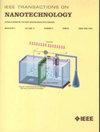Electrical Modeling and Performance Analysis of Cu and CNT Based TSV-Bump-RDL
IF 2.1
4区 工程技术
Q3 ENGINEERING, ELECTRICAL & ELECTRONIC
引用次数: 0
Abstract
The adoption of a feasible bump shape exerts a significant impact on the functionality of a 3D IC. The cylindrical bump structure, considered among the most prevalent shape, endures significant delay, power loss and crosstalk challenges. The tapered based TSV-bump structure recently acquired prominence due to their ultra-low fraction of volume and coupling, resulting in significant alleviation of delay and crosstalk issues. The electrical基于铜和碳纳米管的 TSV-Bump-RDL 的电气建模和性能分析
采用可行的凸点形状对 3D 集成电路的功能有重大影响。圆柱形凸点结构被认为是最常见的形状之一,但却面临着严重的延迟、功率损耗和串扰挑战。最近,基于锥形 TSV 凸块的结构因其超低的体积分数和耦合度而备受瞩目,从而大大缓解了延迟和串扰问题。针对圆柱形、桶形、沙漏形和锥形凸块结构以及耦合、钝化和边缘对再分布层(RDL)的影响,已经完成了电气 RLGC 建模。为了验证所提出的 TSV 凸块结构,将通孔的定量值与电磁和实验结果进行了比较,并对传播延迟、功率耗散、峰值噪声、插入损耗和反射损耗进行了后续研究。所提出的通孔凸点结构与实验结果非常一致,平均偏差仅为 3.51%。此外,还采用了有限差分时域(FDTD)电磁计算来进一步检验性能特征。此外,值得强调的是,锥形凸点结构能有效降低传播延迟、功率耗散、峰值噪声、插入损耗和反射损耗,与桶状、圆柱形和沙漏形凸点相比,平均偏差分别为 34.83%、28.62%、29.98%、13.57% 和 41.06%。
本文章由计算机程序翻译,如有差异,请以英文原文为准。
求助全文
约1分钟内获得全文
求助全文
来源期刊

IEEE Transactions on Nanotechnology
工程技术-材料科学:综合
CiteScore
4.80
自引率
8.30%
发文量
74
审稿时长
8.3 months
期刊介绍:
The IEEE Transactions on Nanotechnology is devoted to the publication of manuscripts of archival value in the general area of nanotechnology, which is rapidly emerging as one of the fastest growing and most promising new technological developments for the next generation and beyond.
 求助内容:
求助内容: 应助结果提醒方式:
应助结果提醒方式:


